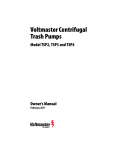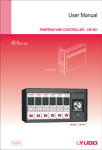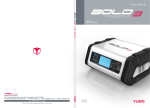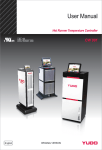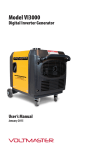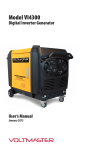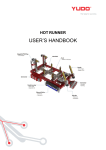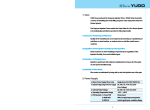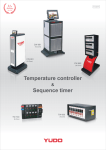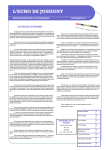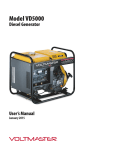Download Ver. 4.5 MN CGF560 English
Transcript
HEAD OFFICE & FACTORY 169-4, Gujang-Ri, Paltan-Myun, Hwasung-City, Gyeonggi-Do, 445-911 Korea TEL : + 82 31 350 2525 FAX : + 82 31 354 7446 e-mail : [email protected] / [email protected](Asia) / [email protected](Europe & America) Website : www.yudo.com Hot Runner System Take-Out Robot Factory Automation (Plastics) HEAD OFFICE & FACTORY 78Blk, 5Lot, 648-4, Gojan-Dong, Namdong-Gu, Incheon, 405-817 Korea TEL : + 82 32 450 4500 FAX : + 82 32 818 8111 / + 82 32 818 8222 e-mail : [email protected] Website : www.yudostar.com HEAD OFFICE & FACTORY 78Blk, 5Lot, 648-4, Gojan-Dong, Namdong-Gu, Incheon, 405-817 Korea TEL : + 82 32 450 7800 FAX : + 82 32 819 3200 e-mail : [email protected] Website : www.yudosuns.com Auxiliary System Factory Automation (Gantry, Bar Feeder, Etc.) HEAD OFFICE & FACTORY 345-40, Gasan-Dong, Gumchon-Gu, Seoul, 153-802 Korea TEL : + 82 2 818 8570 FAX : + 82 2 838 6767 e-mail : [email protected] Website : www.yudorobotics.com ▣ Local Office BUSAN OFFICE TEL : + 82 51 304 1711 FAX : + 82 51 304 1713 DAEGU OFFICE TEL : + 82 53 383 3734 FAX : + 82 53 383 3736 ▣ Subsidiaries ▣ Subsidiaries JAPAN YUDO JAPAN CO., LTD. TEL : + 81 3 6400 4071 FAX : + 81 3 6400 4072 e-mail : [email protected] - Osaka Office TEL : + 81 6 6338 9571 FAX : + 81 6 6338 9572 PORTUGAL YUDO (CHINA) CO., LTD. (柳道實業有限公司) TEL : + 852 2344 5180 FAX : + 852 2344 5018 e-mail : [email protected] SPAIN YUDO TRADING CO., LTD. (柳道貿易有限公司) TEL : + 86 769 8539 4466 FAX : + 86 769 8539 4455 e-mail : [email protected] ROMANIA CHINA YUDO TRADE COMPANY LTD. TIANJIN TEL / FAX : + 86 22 88298279 Mobile : + 86 22 60321560 e-mail : [email protected] YUDO-WANCO (SUZHOU) HOT RUNNER SYSTEMS CO., LTD. TEL : + 86 512 6504 8882 FAX : + 86 512 6504 6886 e-mail : [email protected] YUDO SHANGHAI TEL : + 86 21 5059 3818 FAX : + 86 21 6855 6363 e-mail : [email protected] TAIWAN YUDO-WILSON CO., LTD. TEL : + 886 3 409 1250 FAX : + 886 3 409 1280 e-mail : [email protected] FRANCE TURKEY ITALY GERMANY GWANGJU OFFICE TEL : + 82 62 953 4711 FAX : + 82 62 954 0846 YUDO HOT RUNNER SYSTEMS LDA. TEL : + 351 244 575810 FAX : + 351 244 575819 e-mail : [email protected] YUDO FRANCE TEL : + 33 2 3277 4200 FAX : + 33 2 3253 4655 e-mail : [email protected] YUDO IBERICA S. L. TEL : + 34 93 715 81 22 FAX : + 34 93 715 81 25 e-mail : [email protected] YUDO ROMANIA TEL / FAX : + 40 213 272 115 e-mail : [email protected] YUDO TURKEY TEL : + 90 212 320 9563 FAX : + 90 212 320 9569 e-mail : [email protected] YUDO MR-TECH S.R.L. TEL : + 39 02 995 51 78 FAX : + 39 02 995 85 74 e-mail : [email protected] YUDO GERMANY GMBH. TEL : + 49 2359 50 92 04 FAX : + 49 2359 50 92 05 e-mail : [email protected] WANCO INDUSTRIAL PTE. LTD. TEL : + 65 6264 1166 FAX : + 65 6268 5645 e-mail : [email protected] MALAYSIA MAWANCO SDN BHD. TEL : + 60 3 8945 2127 FAX : + 60 3 8945 2133 e-mail : [email protected] YUDO HOT RUNNER INDIA PVT. LTD. TEL : + 91 250 245 1155~6 FAX : + 91 250 245 1158 e-mail : [email protected] IRAN YUDO IRAN TEL : + 98 21 2367655 FAX : + 44 1989 566010 (U.K.) Mobile : + 98 912 2776072 e-mail : [email protected] THAILAND WANCO INDUSTRIAL (THAILAND) CO., LTD. TEL : + 66 2 757 4989 FAX : + 66 2 757 4988 e-mail : [email protected] YUDO INC. VIETNAM WANCO INDUSTRIAL CO., LTD. (VIETNAM REP. OFFICE) TEL : + 84 8 935 1207 FAX : + 84 8 843 9409 e-mail : [email protected] AUSTRALIA & NEWZEALAND STM AUSTRALIA PTY. LTD. TEL : + 61 3 9885 9795 FAX : + 61 3 9885 2756 e-mail : [email protected] ISRAEL ASI-AFASPEM ISRAEL LTD. TEL : + 972 4 680 2770 FAX : + 972 4 680 2770 Mobile : + 972 544 340360 e-mail : [email protected] GERMANY MKT MOLLENBERG GMBH. TEL : + 49 6162 4077 FAX : + 49 6162 2482 e-mail : [email protected] AUSTRIA PROTEC TEL : + 43 1 259 5917 FAX : + 43 1 259 5918 EURO INTERNET HOLDINGS S.A. TEL : + 48 22 843 0579 FAX : + 48 22 33 90 246 e-mail : [email protected] - HQ TEL : + 1 614 873 1300 FAX : + 1 614 873 6873 e-mail : [email protected] / [email protected] - Central Division TEL : + 1 630 529 7487 FAX : + 1 630 529 7469 Mobile : + 1 630 605 9119 e-mail : [email protected] - Mid-Western Division Mobile : + 1 937 478 9039 e-mail : [email protected] CANADA - Eastern & Canada Division TEL : + 1 905 304 1680 FAX : + 1 905 304 9934 Mobile : + 1 905 512 6358 e-mail : [email protected] MEXICO - Western & Mexico Division TEL : + 1 805 480 4922 FAX : + 1 805 432 1680 Mobile : + 1 805 432 5319 e-mail : [email protected] BRASIL U.K. PAULO ENG. LTD. TEL : + 55 11 3392 5775 e-mail : [email protected] YUDO (U.K.) LTD. TEL : + 44 1989 763423 FAX : + 44 1989 566010 e-mail : [email protected] ▶We reserve the right to change specifications without notice. MODEL : CGF 560 Instruction Manual ▣ Agencies SINGAPORE INDIA U.S.A. TEMPERATURE CONTROLLER POLAND RUSSIA SOUTH AFRICA CS PLASTECH TEL : + 7 495 737 9575 FAX : + 7 495 236 3221 e-mail : [email protected] HESTICO PTY. LTD. TEL : + 27 11 768 5228 FAX : + 27 11 885 1693 e-mail : [email protected] Ver. 4.5 MN CGF560 English English USER’ S MANUAL TEMPERATURE CONTROLLER CGF 560 Series Thank you for using YUDO product. Before using the product, please read this instruction manual carefully to avoid any damage due to improper usage. If you have any questions, please do not hesitate to contact our Head Office or your nearst YUDO Office. CGF-560S MICOM CONTROLLER 2 CONTENTS 1.Items to check before using the Controller & Operation Procedure 2.Basic Structure of Controller 3.Outline of Controller 1)PID Controller 2)Auto Tuning 3)Output Method 4.Controller Unit Specification 5.Name of Component 6.Operation Modes 1)AUTO Mode 2)STAND-BY Mode 3)MANUAL Mode 7.Menu Setting 1)User's Setting Menu 2)Supplier's Setting Menu 8.Error Code Display Function 9.Integrated Control Function 10.Connector & Cable 1)How to wire a Heater and T/C in Connector 2)Standard Specification Option 3)Options 11.Diagram for Terminal Connection and Structure 12.Electric Wiring Diagram 1)240V 3 Phase 3 Line Type 2)380V/414V 3 Phase 4 Line Type 3)240V 1 Phase 2 Line Type 13.Wiring Modification Method 1)How to convert in order to use Power Input AC380V/415V from AC240V 2)How to convert in order to use Power Input AC240V from AC380V/415V 14.Default Value 1)Default Value of User's Menu 2)Default Value of Supplier Menu 15.Security Marks 16.Check Point for Trouble Shooting 3 4 5 5 6 7 7 8 15 16 17 19 19 21 22 22 23 USER’ S MANUAL TEMPERATURE CONTROLLER 1. Items to check before using the Controller &Operation Procedure 2. Basic Structure of Controller Installation Condition : The bottom side is blocked for the safety. 1) Check the wiring status of the connector attached to the mold and the type of T/C. 2) Check if the power lines are separated from the T/C lines, and they are arranged in order. 3) Check if the trunk specification fits to the Controller. 4) Check connection and wiring state of the trunk. 5) Check resistance and insulation state of the heater, then check if T/C wire is disconnected. 6) After the mold is fixed at the injection machine, connect the trunk. 7) Check if the Power Switches of the Main & Units are off. 8) If Input Voltage (240V/380V) fits to the controller voltage specification, connect Power Cable. (Input power voltage is noted on the label of the controller case. If the power input voltage does not fit to that written on the label, ask a territory office and correct the controller wiring. False wiring can cause malfunction of the controller and damage on 3. Outline of Controller the unit). The controller is a device that has a function to maintain the desired 9) Make it sure to earth ground wire of the controller. (Neglect to earth the ground wire temperature consistently by sensing the state of Hot Runner System by use (green line) can cause damage to fuse and Triac due to noise voltage) of high-intellectual computer system named MICOM and input proper power. 10) Turn on the Main Power Switch first. It has several important functions for precise temperature control. 11) Then, turn on the Unit Power switch. 12) Set to the appropriate temperature. 13) Check if the desired temperature is reached and stabilized. 1) PID Control is a method in order to maintain temperature at the set temperature accurately by controlling Output Power reflecting proportion, integration, and differentiation values. CAUTION : To prevent possible malfunction of the temperature control modules, the cooling fan MUST OPERATE AT ALL TIMES. 4 5 USER’ S MANUAL TEMPERATURE CONTROLLER 2) Auto Tuning is a function to extract the governing factors through analyzing capacity of the 5.Name of Components heaters and heat constant of the mold (characteristics of latent heat and released heat). It helps precise control of temperature regardless of CGF-560S MICOM CONTROLLER environmental change. 1. SOFT LED 2. OUT LED 3. PV FND 4. SV FND 3) Output Method can be changed depending on environment. ■ PWM mode : Precise temperature control can be achieved. But electric noise is bigger than that in SSR mode. 5. SET 6. MODE 7. UP 8. DOWN 9. SEL ■ SSR mode : Electric noise is small, but the specific temperature controlling ability is inferior to PWM mode 10. AUTO LED 11. STAND-BY LED 12. MANUAL LED 13. MODULE Handle 14. MODULE Power Switch 15. MODULE Lock Bolt 4. Controller Unit Specification ■ Indoor use. ■ Power Input Voltage : AC 85V-250V, 50/60Hz, 15A Displays SOFT operation Displays Power Output State Displays Measured Temperature (Red 4 DIGIT-Position Value)of Hot Runner System Displays the Set Temperature (Green 4 DIGIT-Set Value)of Hot Runner System Enter Key. Mode Change Key. Value Increase Key. Value Decrease Key. AUTO, STAND-BY MANUAL function conversion key. Displays Auto Mode is selected Displays Stand-by Mode is selected Displays Manual Mode is selected ■ Load Capacity : 15A , 50W-1650W(110V), 100W-3300W(220V) ■ Output Type : PWM(Pulse Width Modulation), SSR(Solid State Relay) ■ Sensor Type : Thermocouple (J, or K) ■ Temperature Setting Range : 100¡C ~ 400¡C, 212¡F ~ 752¡F ■ Temperature Stability : –0.5% (Full Scale) ■ Temperature Control Type : PID CONTROL ■ Surrounding temperature : -10¡C~50¡C 6. Operation Modes 1) AUTO Mode Normal operation mode in which the temperature is controlled and maintained automatically in accordance with the Set Degree. ■ Display conversion : When key is pressed, the display on SV is converted as the following order; [Set Temperature]=>[Output %]=>[Ampere] =>[Set Temperature] ■ Altitude : up to 2000m ■ Over Voltage Categories II ■ Degree of Mobility : Plug-in module ■ F1, F2:250V-15A (Special Fuse) F3:250V-1A 2) STAND-BY Mode Down the Output Power to the Given Rate for the given time, when it is needed to stop production for a while on the way or production. ■ Holding key for 1 second in AUTO mode will convert it into STAND-BY Mode ■ Temperature setting value (SV) is changed into % rate on the basis of the Set Temperature during Stand-by mode is working. 6 7 USER’ S MANUAL TEMPERATURE CONTROLLER ■ Output power is reduced to maintain at the STAND-BY Temperature. ■ STAND-BY Mode will finish after the given time, and move into AUTO Mode 1-1) AL-H (High Limit Alarm Function) On the basis of the Set Temperature, when the temperature become higher than Setting Value, the AL-H function is operated. ■ When User’ s can adjust Power Output by using and key for 3) MANUAL Mode Emergency Manual Operation at his will. ■ When key is held for 3 seconds, AL-H is displayed on PV, and the High Limit Value for AL-H is displayed on SV. ■ The value can be set through 00~99 by using key is pressed twice, for 1 seconds each at the Auto Mode, it turns into Manual mode , key, and the Initial Value is set as 50 at the factory. ■ To save as Set Value, press and keys together. ■ If sensor detect any Disconnection of Thermocouple (tC.oP), or Thermocouple Short (tC.St), it is converted into Manual mode automatically for a emergency operation mode. ■ Setting Value(%) can be modified with , keys. 1-2) AL-L (Low Limit Alarm Function) On the basis of the set temperature, when the temperature is lower than the Low Limit Setting Value, the AL-L function is operated. ■ For the first push key for 3seconds, then press the key once again. ■ AL-L will be displayed on PV, and the Setting Value for the AL-L will be 7. Menu Setting displayed on SV. ■ The value can be set through -99~00, by using 1) User's Setting Menu , key, and the Initial Value is set as -50 at the factory. User's setting menu diagram ■ To save as Set Value, press and keys together. Ex) In case SV(Temperature Setting) is set as 200¡C, AL-H(High Limit Alarm) as 50¡C, AL-L(Lowest Limit Alarm) as -50¡C : =>AL-H start at 250¡C of measured temperature, AL-L at 150¡C ■ Press ■ key for 3 seconds in order to start User’s setting menu. key is used for selecting functions, and key for ON/OFF, keys for change parameter. ■ To save as Set Value, press and keys together. But also Present Valve is replaced automatically as Set Value unless any key is pressed for 5 seconds. ■ Modifying Set Value must be done under LOCK OFF Mode. 8 9 USER’ S MANUAL TEMPERATURE CONTROLLER ■ Choose ON or OFF with 1-3) STBY (STAND-BY Setting) (1)t(STAND-BY Time Setting) Hold ■ To save, press and key. keys together. key for 1 seconds and find AL-H is displayed on PV. Then press it twice more until Stby will be displayed on PV. ■ For the conversion between Hour and Minute, press 1-5) ID (Channel Setting-Option) key. ■ Stand-by Time can be adjusted from 0 (minutes) till 9 hours 59 minutes by use of , keys. Units. The computer in Central Control Office could control each Unit according to it’s own ID number. ■ Integrated Management System must be installed additionally in order to (2)P(STAND-BY Temperature Setting) ■ At the state of Stand-by Time setting, Push key to convert into Stby Temperature Setting Mode. ■ The % rate on the basis of Set Temperature is displayed on SV. ■ The value can be set in the range of 00-99% with ■ To save as Set Value, press This is provided to help the Integrated Management for many Controller and , keys. keys together. Ex) In case SV(Temperature Setting) is set as 200, t(Stand-by Time) as use Integrated Management Function(Option for CGF-570 model). ■ Hold key for 3 seconds until AL-H is displayed on PV. ■ Press it 5 times more, until -id- is displayed on PV, then the channel ID is displayed on SV ■ The value can be set from 00 to 63 with ■ To save, press and , keys. keys together. 1hour(1:00), P(Standby Temperature%) to P.75 : => Stand-by Mode is operated for 1 hour and the Temperature for Standby Mode is set as 140¡C(75% x 200¡C). 2) Supplier's Setting Menu Supplier's setting menu diagram 1-4) LOCK (Key S/W Locking device) ■ Press and ■ Press for selecting functions, ■ Hold ■ Press key for 3 seconds, and find AL-H is displayed on PV. ■ Press it 4 more times until LOCK is displayed on PV, then you can see the OFF on SV. key for ON/OFF, and keys together, to save the value. But also it will be saved automatically after 5 seconds, unless any other key is pressed afterwards. ■ Setting must be done under LOCK OFF Mode 10 and keys for setting parameters. This is a function to prevent from the change of parameter by mistakes of user. keys together, for 3 seconds. 11 USER’ S MANUAL TEMPERATURE CONTROLLER 2-1) -IN- (Sensor selecting function) 2-4) SOFT (Soft START setting) Type of Thermocouple can be selected to measure the Heater Temperature. This helps to avoid humidity-caused damage in heater, by outputting 1~30% ■ Hold of Input Power for 1 minute at the beginning of Power Supply, in order to and keys for 3 seconds together. Then - IN - will be displayed on PV, and J or K (sensor type) will be displayed on SV (YUDO check connection state of a heater and sensors, and start smooth control Standard Specification is mainly J for export, and K for domestic) action at low heat state. ■ Sensor Type can be selected with ■ To save, press and key. ■ Hold keys together. and keys for 3 seconds at the same time. Then - IN - will be displayed on PV. ■ Press key three more times to display SoFt on PV and on/oFF on SV. ■ SOFT START (ON/OFF) can be selected with 2-2) C-F(Celsius and Fahrenheit degrees Selection) ■ To save, press and key. keys together. Each Celsius or Fahrenheit degrees can be selected for temperature units. ■ Hold and keys for 3 seconds at the same time, then - IN - will be displayed on PV. ■ Press This is provided to detect malfunction of the heater(disconnection). key again to display C-F on PV and CdSP/FdSP (selected temperature display type) on SV. ■ Temperature unit can be selected by ■ To save, press and 2-5) HC-H (High Limit Current Setting) It displays "HtSt" alarm sign, and stops output, when the current becomes bigger than the high limit . key. keys together. ■ Hold and keys for 3 seconds at the same time. Then - IN - will be displayed on PV. ■ Press key 4 times more to display HC-H on PV and the High Limit Current Value on SV. 2-3) UNIT(Temperature display Unit Settiing) ■ The value can be changed by use of This is a function to select Temperature Units displayed. You can choose ■ To save as Set Value, press and , key. keys together. 1.0 or 0.1 for temperature units. ■ Hold and keys for 3 seconds together. Then - IN - will be displayed on PV. ■ Press This is a function to detect malfunction of the heater (disconnection). It key two times more to display the corresponding unit on PV, and 1.0 or 0.1(Temperature setting unit) will be displayed on SV. ■ Temperature units can be selected with ■ To save, press 2-6) HC-L (Low Limit Current Setting) and key. keys together. displays "Ht-oP" alarm sign, and stops output when the current is smaller than the Low Limit. ■ Hold and keys for 3 seconds at the same time, then -IN- will be displayed on PV. ■ Press key 5 times more to display HC-L on PV, and the lowest limit current value on SV. 12 13 USER’ S MANUAL TEMPERATURE CONTROLLER ■ The value can be changed by use of ■ To save as Set Value, press and , key. keys together. ■ Press key 7 times more to display HSCI on PV , and PWM/SSR(Output Method) on SV. ■ Output method can be selected by pressing 2-7) Error Code saving function ■ To save, press and key. keys together. Error Codes are saved in memory in order of sequence. ■ Hold and keys for 3 seconds at the same time. Then - IN - will be displayed on PV. ■ Press 6 times more to find - Er - on PV, and the stored Error Code on SV. ■ Error Code can be saved up to 20 cases. ■ The other content can be displayed in sequence, when pressing or key is repeated. ERROR OCCURRENCE SIGN NO ERROR SIGN 1 tC.oP DESCRIPTION Sensor Disconnection 2 tC.St Sensor Short-Circuit 3 tC.rE Sensor Polarity Reverse 4 AL-H High Limit Alarm 5 AL-L The Low Limit Alarm 6 Ht.oP Heater Disconnection 7 Ht.St Heater Short 8 tr.St Triac Short 9 FU-1 Fuse 1 Disconnection 10 FU-2 8. Error Code Display Function No Description Error classification - Disconnection, Short, or Reversed Polarity of Sensor can be checked. When Disconnection or Short is detected, it is converted into Manual Operation Mode automatically, and Power Output will be continued to maintain at the Set Temperature. This function helps to prevent interruption in production due to malfunction of a sensor, and Output Power can be adjusted manually at will. - On error occurance, Sensor Disconnection(tC.oP), Sensor Short(tC.St), and Sensor Reversed(tC.rE) could be displayed on PV. When the problem is solved, power must be put again to recover Normal Operation. Fuse 2 Disconnection 2-8) Selecting Output Method PWM or SSR are available depending on the user’s choice considering 1 environment. ■ Hold and keys for 3 seconds at the same time. Malfunction on Temperature Sensor Then - IN - will be displayed on PV. 14 15 USER’ S MANUAL TEMPERATURE CONTROLLER Description No Error classification 2 Malfunction on heater - Disconnection, Short Circuit, and Over Current of heater can be detected. Short status of Output Device(SSR,TRIAC, RELAY) can be checked also. - On error occurrence, Heater Disconnection(Ht-oP), Heater Short(Ht-St), and TRIAC short(tr-St) could be displayed on SV. When the problem is solved, power must be put again to recover Normal Operation. 3 Fuse Disconnection - In case the fuse blown out, related fuse number is displayed on SV. - When the problem is solved, power must be put again to recover Normal Operation. 10. Connector and Cable Connector means a component attached to the end part of cable in order to make it easy to connect / disconnect the wire to the mold / controller. Various kinds of connectors are used depending on load capacities. Standard Spec. : Integrated wire(Power+T/C) 9. Integrated Control Function (optional) Central Control for every modules in the frame box can be executed effectively, with only one switch handling, i.e. STAND-BY or LOCK for every Optional Spec. : Separated wire(Power, T/C) module could be controlled simultaneously. This function is available for CGF570(optional) model only. 1) AL/RE (Alarm RESET Function) When buzzer works with corresponding error codes in one or more modules . You can stop the sound of the buzzer with only one handling (Only alarm buzzer will stop. But it doesn’t mean that the cause of the error is removed). 1) How to wire a heater and T/C in connectors 16P Male standard connector (2 ZONE~4 ZONE) 2) STBY (Integrated STANDBY function) In order to stop the production for a while on the way of normal operation, you can select this function to reduce the Power Supply, with only one handling. 3) LOCK (LOCK ON function) This is a security function to prevent from any modifications of setting. You can convert all modules into Lock ON/OFF Mode with only one handling. NOTE:# NO:ZONE NUMBER 16 17 24P Male standard connector (5 ZONE~24 ZONE) USER’ S MANUAL TEMPERATURE CONTROLLER 11. Diagram for Terminal Connection and Structure 2) Standard specification Female connector is attached to the mainframe, and YUDO supply it with 4 pin, 16 pin and 24 pin as same to the following standard. NO CONTROLLER CONNECTOR QUANTITY 1 1 ZONE 4P Round Jack 1 EA 2 2 ZONE 16 P 1 EA 3 3 ~ 4 ZONE 16 P 1 EA 4 5 ~ 6 ZONE 24 P 1 EA 5 7 ~ 8 ZONE 24 P 2 EA 6 9 ~ 12 ZONE 24 P 2 EA 7 13 ~ 16 ZONE 24 P 3 EA 8 17 ~ 20 ZONE 24 P 4 EA 9 21 ~ 24 ZONE 24 P 4 EA 3) Options As for option in wiring, Separated power lines from that of T/C can be selected depending on customer’s preference. But also the other connector out of YUDO standard could be equipped when those are supplied from 12. Electric Wiring Diagram customer. In case that, a cable is fabricated according to special order, Controller Connector must be fabricated in accordance with the Cable Specification. 24P FeMale heater connector 240V 3Phase 3 Line Type 24P Male T/C connector As for Zone No.:Please refer to the standard spec. 18 19 USER’ S MANUAL TEMPERATURE CONTROLLER 13.Wiring modification method 380V/414V 3Phase 4 Line Type YUDO Temperature Controller operates with supply voltage 220~240V AC. But even in case of supply voltage 380~415V AC 3phase 4 line, by re-wiring as shown below, 220~240V AC can be taken between one phase(R, S or T) and Neutral(N). YUDO Temperature Controller be supplied with wiring for supply voltage 220~240V AC unless special instruction. Please check the current wiring. Caution) Before re-wiring, make sure AC main power OFF and Power Switch OFF on controller. Re-wiring for supply voltage 380V AC from wiring for supply voltage 220V AC Supply voltage 220V Controller 220V Supply voltage 380V Controller 220V 1. Power off 2. Open the back cover of controller 3. Separate all 3 blue-sleeved wires from L1,L2 and L3 4. Plug all 3 blue-sleeved wires into N 240V 1 Phase 2 Line Type Re-wiring for supply voltage 220V AC from wiring for supply voltage 380V AC Supply voltage 380V Controller Supply voltage 220V 220V Controller 220V 1. Power off 2. Open the back cover of controller 3. Separate all 3 blue-sleeved wires from N 4. Plug blue-sleeved RED wire into L1 5. Plug blue-sleeved WHITE wire into L2 6. Plug blue-sleeved BLACK wire into L3 Warning) Do NOT plug PE wire into N. Plugging PE wire into N may cause damage of controller, for which YUDO will not take responsibility. 20 21 USER’ S MANUAL TEMPERATURE CONTROLLER 14. Default Value 16. Check Points for the Trouble Shooting 1) Default value of user's menu NO MENU VALUE 1 SV(Setting temperature) 200¡C 2 AL-H(High Limit Alarm) 50¡C 3 AL-L(Low Limit Alarm) -50¡C t(Stand-by time) 1.00(1hour) P(Stand-by temperature rate) 75%(150¡C) 4 STAND-BY 5 Lock OFF 6 -Id- CH00 2) Default Value of Supplier Menu NO MENU VALUE 1 -In-(Sensor Type) J or K(optional) 2 C-F(Celsius/Fahrenheit) Mainly CdSP(domestic)/FdSP(foreign) 3 Unit(Temperature Unit) 1.0 4 SoFt(Soft start Function) On 5 HC-H(High Limit Current) C16.0 6 HC-M(Minimum Current) C00.2 7 -Er-(Error History) 0.1-0 8 HSCI(Output Method) PWM Phenomenon No 1 tC.oP on PV 2 tC.St on PV 3 tC.rE on PV 4 Ht.oP on SV 5 Ht.St on SV 6 tr.St on SV 7 FU-1 on SV 8 FU-2 on SV Temperature rises continuously 10 Temperature drops continuously 9 11 Severe temperature Check point - Check T/C wire with tester - When disconnected, replace it - Check if T/C wire is mal-contacted at connector - Sensor(T/C) wire is short on output or pressed by mold side - +/- polarity of sensor(T/C) is changed - Check connection and change polarity of T/C at connector attached to mold - Check resistance of heater with tester, if it is - Heater was disconnected blown out replace heater - Short circuit in heater or short in heater - Check short circuit of heater or short in heater line with tester wire - Make wiring so that capacity of heater may lower - Capacity of heater is too high(15A or then 15A. more) - TRIAC attached to heat radiator board - Check pin in TRIAC - 2 or 3 pins may be in short circuit is damaged - Replace F-1 fuse.(250V 15A) - F-1 fuse is disconnected by momentary over-current - Replace F-2 fuse.(250V 15A) - F-2 fuse is disconnected by momentary over-current - Check pin in triac. - TRIAC attached to heat radiation - 2 or 3 Pins may be in short circuit board of controller is damaged. - Change fuse - FS1 or FS2 fuse blown out - Check resistance of heater with tester - Heater blown out - Check connection of heater - Heater wire disconnection - Check sensor disconnection - Sensor(T/C)disconnection - Check contact state of sensor - sensor contact is unstable - Check sensor type - sensor type is different each other Probable Cause - Sensor(T/C) was disconnected (Deviation between set Temp. & Sensing Temp) 12 Controller temperature rises, - T/C wire is pressed by mold or it s coat - Check and replace T/C wire but heater in actual mold is is peeled, so as to contact mold or line over heated 15. Security Marks DANGEROUS VOLTAGE INSIDE DISCONNECT AC POWER BEFORE SERVICING 22 13 Setting temperature of controller equals with present temperature, but the heater in actual mold is overheated or cold - T/C (Sensor)type between mold and controller is different EX:CA(K)→IC(J), IC(J)→CA(K) 23 - Make T/C(sensor)type of mold equal with that of controller












